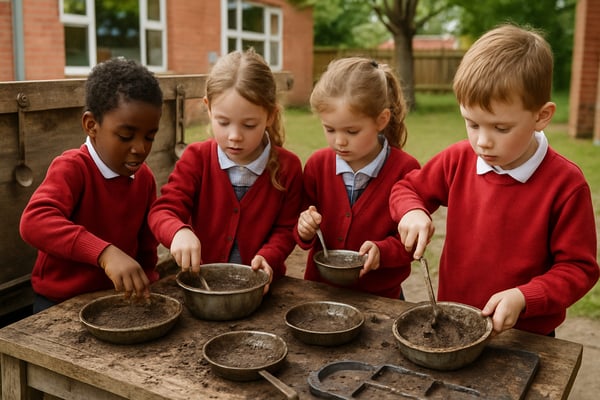As the world grapples with the increasingly urgent need to meet the many environmental challenges it faces, teaching children about sustainability has never been more important. Doing so provides kids with the skills, knowledge and attitudes they need to become active, environmentally aware citizens who can start tackling the various issues.
And the fact that the UN’s fourth sustainable development goal is Quality Education underlines teaching’s importance as one of the most powerful tools we have.
The good news is there are many things schools can do, from reassessing their values and celebrating sustainable behaviour to making physical changes at their premises.

Here are just a few quick thoughts – you’re no doubt doing many of these things already:
- Get planting and create habitats for wildlife. Build a bug hotel, a bee house or a butterfly barn. Consider rewilding any unused land.
- Obviously, look at all the usual things like energy and water consumption, travel and transport, paper and printing and recycling. These may seem obvious ones, but there are many ‘quick wins’, and they’re all important nonetheless.
- Look again at food waste. And are you encouraging vegetarian or plant-based dishes? Meat-free Mondays could be one useful starting point. Equally, look at how pupils might grow some of their own food.
The importance of outdoor learning and sustainability
Clearly, school grounds are the open spaces your pupils are in daily, so use them to give children access to nature. In fact, just letting kids enjoy the outside world is a key first step to engaging them in sustainability. Think long grass and weeds in some parts of the grounds, and encouraging play with natural materials such as leaves, sticks and stones.
Grab their interest and then let them acquire the skills and knowledge they need to make a difference. But it all starts with outdoor play and learning – plus there’s extensive research showing the significant beneficial impact on health and wellbeing of spending at least part of the school day outdoors.

How an outdoor canopy can help
Thanks to an outdoor canopy, you can reap the rewards of interacting with nature and outdoor learning all year round, so that this side of things becomes fully integrated into your school curriculum.
There are other environmental benefits, too, including:
- If it’s placed next to a door or window, a canopy can significantly reduce how much solar heat enters the building, and this helps to lower the internal temperature. (Solar heat gain is the increase in heat of a structure (or object) in a space, resulting from absorbed solar radiation.) This saves on the financial cost and environmental impact of air conditioning.
- Some canopies can be designed to incorporate rainwater harvesting solutions, allowing you to use this water in your school, for example for irrigation.
- Finally, you could have a canopy with solar panels, to harness the sun’s power and generate electricity to top up your energy requirements and save money.
Sustainable school canopies from Kensington Systems
We’ve joined forces with a leading sustainability consultant for organisations and the built environment, Planet Mark. With their help, we’re significantly reducing our carbon emissions as we work towards the global transition to Net Zero.
So, from covered walkways to outdoor learning, playground and dining structures, we strive to make our products for schools as environmentally friendly as we possibly can. We use materials including long-lasting aluminium and sustainably sourced timber, for example.
Other benefits include free site surveys, end-to-end project management, a 25-year warranty, exceptional service plus a low-maintenance end result. What’s more, all our installers are fully DBS-checked.
Download a brochure or get in touch today to get the ball rolling.




.jpg?width=600&height=400&name=Paddock%20SEND%20School%20-%20Spaceshade%20canopies%20with%20post%20protectors%20(6).jpg)
